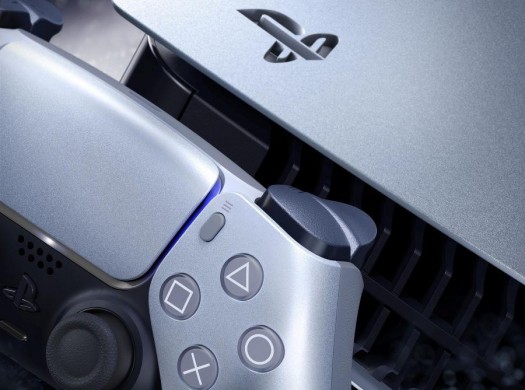Navigating the world of fitness trackers can feel overwhelming, especially when trying to decide between the two industry leaders: Fitbit and Apple Watch.
Both brands have optimized the wearable technology offered to meet the various fitness and lifestyle requirements, fashion, health monitoring, and daily use. In order to facilitate your decision to choose the right device according to your objective, we did a detailed comparison and focused on crucial factors like fitness options, precision, usability, appearance, compatibility, etc.
Both Fitbit and Apple Watch are considered to be reliable and modern fitness trackers. Whereas Fitbit focuses more on fitness and wellness with its sleek and affordable wearables, Apple Watch is a more encompassing smartwatch experience, but for a premium. In the following section, we provide a detailed analysis of the features and characteristics that define those brands.
Fitbit vs Apple Watch Fitness Tracking Features in 2025
In terms of fitness tracking, both Fitbit and Apple Watch offer excellent tools when it comes to tracking all sorts of health-related objectives. However, each brand focuses on various aspects of fitness tracking, which makes them different in terms of functionality and the target group of users who are interested in fitness.
Fitbit: A Deep Dive into Health Metrics and Personalized Insights
Fitbit has been in the fitness tracking business for many years and offers detailed data on the health of the user. Whether you’re an experienced sportsman or just a beginner, Fitbit has a wide variety of devices and each of them is designed for various tracking options.
Heart Rate Monitoring and Activity Tracking
Fitbit devices employ a consistent heart rate monitor to determine the level of activity, and give users an idea of their fitness and health status. It offers detailed daily reports of the user’s activity and includes steps taken, distance, floors climbed, calories burned, and active minutes. The devices divide your pulse into zones (fat burning, cardio, and peak), and show the time spent in each zone, which can be useful in choosing the correct workout intensity and the time needed for the breaks.
Sleep Tracking
Hence, one of the most appreciated aspects of Fitbit is the possibility of tracking sleep. Using advanced sensors, Fitbit is able to track and record the stages of sleep, light, deep, and REM sleep, and present a nightly Sleep Score of the quality of your sleep. Disturbances, time awake, and even oxygen levels during sleep are also monitored by Fitbit to give you an idea of your general sleep quality and sleep efficiency. Sleep data on Fitbit is displayed in the Fitbit app and here you can look at the sleep trends and get tips on how to improve sleep health.
Stress Management and Mindfulness
Fitbit included stress management tools in its wearables such as the Fitbit Sense 2 with an EDA sensor to measure stress responses. Stress is estimated by skin conductance and heart rate variability (HRV) which change when the body is stressed. In combination with other mindfulness exercises and relaxation instructions that can be found in the Fitbit application, these features make Fitbit a good choice for users who care about their mental health.
Advanced Health Metrics
For users who want to get to know their health in detail, Fitbit introduces features like respiratory rate, skin temperature changes, and blood oxygen saturation (SpO2) on devices like the Fitbit Sense 2. These features offer the users extra information that is useful for handling fitness objectives and health. The Fitbit app, for instance, can recommend workouts based on recovery data, which helps to decide the intensity of activities based on your current condition.
Built-in GPS and Workout Tracking
The Charge 5 and Sense 2 models come with GPS integration, which means that users can run, walk or bike without needing to have their phone with them in order to track distance, pace, and route. Not all Fitbit devices come with GPS, but those that do are useful in outdoor exercises like running, hiking, cycling among others. Fitbit also offers on-screen workout prompts and guided sessions for activities like yoga, cardio, and strength training. Structured workouts are a part of training regimens for most athletes or fitness enthusiasts and therefore, the information provided by Fitbit about the heart rate, recovery, and endurance are useful in the long run.
Apple Watch: Precision in Real-Time Tracking and Versatile Fitness Tools
Apple Watch takes the fitness tracking concept from a very flexible perspective by incorporating advanced devices to cater for different exercises and general health activities. Developed with navigation and precision as its strong points, Apple Watch is great at giving feedback on fitness levels and synching with other Apple devices.
Activity Rings and Motivational Features
Activity Rings is one of Apple’s most easily recognizable and engaging systems that push the user to ‘complete’ the Move, Exercise, and Stand rings every day. Every circle corresponds to a health objective, and the user’s goal is to achieve these circles by walking, exercising, or standing. The rings make an exercise and turn it into a fun experience while offering subtle cues whenever the user has been sedentary for too long, which is perfect for users who like milestones.
High-Precision Heart Rate Monitoring
The Heart Rate Monitor is one of the most accurate ones on the market, and it is constantly monitored throughout the day on Apple Watch. Some of the features that make it easy for users to analyze trends in cardiovascular health include, rest, walk, workout, and recovery heart rates. Apple’s heart rate monitor is based on PPG technology and on electrical heart rate sensors in the company’s more expensive devices, which support irregular rhythm notifications and ECG measurements. These health-oriented features make Apple Watch a strong tool for users who want to pay attention to their heart condition frequently.
GPS Tracking and Route Mapping
Every Apple Watch has GPS integrated into the device, and it is very accurate, though the Ultra model is even better. This dual-frequency GPS utilizes both L1 and L5 frequencies to ensure accurate signals are obtained regardless of the environment, for instance, in the middle of buildings or in the countryside. This makes the Apple Watch especially useful for runners, cyclists and anyone else who needs accurate GPS for pace, distance, and location.
Workout Modes and Automatic Detection
The workout tracking feature in Apple Watch goes as far as offering tracking for running, swimming, yoga, HIIT, Rowing, custom workouts, and many more. It has some basic motion sensors that detect activities such as walking or running and easily transfers to workout tracking without the need for further input. While exercising, the Apple Watch gives details such as heart rate, calories used, distance covered, and pace. It also determines the recovery time and VO2 max estimates for the aerobic activities making this application appealing to athletes.
Health Metrics and Safety Features
Besides workout tracking, Apple Watch has features like Blood Oxygen (SpO2) and Respiratory Rate. Apple’s Series 8 and Ultra models include skin temperature sensing for tracking changes throughout the day, which can be useful for tracking menstrual cycles, and other aspects of overall health and wellness. There is also a Fall Detection feature that will alert the emergency contacts if the wearer has a fall and is not responding. Apple Watch Ultra also comes with added safety features such as an integrated siren that comes in handy in situations where the user finds themselves in dangerous situations while outdoors or engaging in risky activities.
Integrated Apps and Ecosystem Support
Fitness tracking and health monitoring features of Apple Watch are directly linked to the Apple Health app which allows users to have all their health information in one app. The watch also comes with the support of a number of third-party fitness apps that can be downloaded and used for workout, diet, and health purposes. For Apple Watch owners, Fitness+ provides new, additional workouts specifically for Apple’s wearable and delivers more variety and structure to workouts.
Key Differences in Tracking Features
Focus on Health Metrics vs. Real-Time Feedback: Fitbit’s strength lies in providing detailed health metrics, such as sleep stages and stress tracking. Apple Watch, by contrast, emphasizes precise activity tracking and real-time stats, making it appealing for active users who want instant feedback during workouts.
Sleep Tracking: Fitbit offers industry-leading sleep tracking with detailed analysis, while Apple Watch provides more basic sleep tracking without as much depth in sleep-stage differentiation.
Workout Options and Automatic Detection: Apple Watch supports a broader range of workout modes and provides automatic detection for certain activities, which can be helpful for users engaged in varied fitness routines. Fitbit also offers workout options but does not include automatic detection in all models.
GPS and Route Accuracy: Apple Watch’s GPS is better than Fitbit’s, especially on the Ultra model, so it is perfect for outdoor workouts that need accurate navigation.
Compatibility and App Integration: Apple Watch works closely with the Apple ecosystem, so users can interact with Health, Fitness+, and other services. Fitbit, however, is platform-independent, it works well with both iOS and Android systems which makes it flexible for users on both systems.
Fitbit vs Apple Watch Device Accuracy
Apple Watch is highly accurate, especially in activities tracking as well as location information. The watch also has GPS capabilities which are even better on the Ultra variant of the watch with a dual-frequency GPS for better accuracy. In the field tests, the Apple Watch was spot on with distance, speed, and route, and is perfect for runners, cyclists, and anyone exercising outdoors. There is still a high level of accuracy in Fitbit, but some of the users record a slight difference in the steps taken and the calories burned. But Fitbit has some of the most accurate sleep tracking algorithms, including the stages of sleep and interruptions. If sleep tracking information is important to you, then Fitbit will be a better option.
Fitbit vs Apple Watch Ease of Setup
The initial configuration of both Fitbit and Apple Watch is easy because both devices offer straightforward guidelines on how to set up. Fitbit can be used with both Android and iOS, so it has a capability of crossing the bridge between the two systems. Apple Watch, on the other hand, can only work with the iOS devices. To Apple users, on the other hand, this exclusivity leads to a seamless setup that works well with other Apple devices including syncing with the Health app to compile health data.
Fitbit vs Apple Watch Ease of Use
Apple Watch has a better design than Fitbit, with a larger display and clearly visible icons of the menus. Apple’s display is clear and very sensitive to touch, which means you can glance down at your metrics without having to shield the screen from the sun. The design of the Apple is easy to navigate with a crown and side button for easy use during exercises. Fitbit is quite easy to use and that is something that people who don’t want any other gadgets apart from a fitness tracker would appreciate. There is a downside to those small screens, however: some users have reported that text on them can be hard to read in some lighting situations, especially on cheaper Fitbits.
Fitbit vs Apple Watch Design and Comfort
Fitbit prioritizes comfort with lighter, slimline designs that feel unobtrusive during intense workouts and continuous wear. Fitbit’s activity bands, such as the Inspire 3 and Charge 5, are discreet and comfortable, suitable for all-day use. Fitbit’s premium models, like the Sense 2, add more robust fitness features without sacrificing comfort.
Apple Watch on the other hand is slightly built more towards the heavier end with a larger square shaped face that some people consider large and slightly thick. The most advanced Apple Watch Ultra comes with many features; however, it is significantly heavy, especially during exercises. Apple’s regular Series 8 and SE are slimmer but still thicker than most Fitbits.
Fitbit vs Apple Watch Compatibility and Ecosystem
Fitbit gets this round, as it can be used with iPhones and Android phones. This flexibility is good for users who may move between the two or wish to use an Android phone. Fitbit has an app available on all platforms and it offers a clean and easy to read dashboard of every health metric including heart rate, sleep, steps, calories burned, and more. The smartwatch is a perfect fit for Apple consumers because it can be used to answer calls, send messages and even make purchases through Apple Pay. If you are an iPhone user and you are using all of Apple’s apps, then the Apple Watch complements your tech and it’s more of a smartwatch than a Fitbit in terms of versatility.
Fitbit vs Apple Watch Battery Life
Battery life is another factor, and in this area, Fitbit is ahead. Most Fitbit models such as Inspire 3 and Charge 5 can go up to a week without charging while the Sense 2 can go up to about 6 days. This longer battery life is beneficial for individuals who do not wish to charge their devices frequently, especially those utilizing sleep tracking. In this regard, Apple Watch’s battery is not as long as that of the iPhone; the Series 8 and SE models, for instance, last about 18 hours on a single charge. While the Apple Watch Ultra does better with up to 36 hours, it is not as long-lasting as Fitbit. Users who require a device for tracking for a long time without charging the device often would prefer Fitbit.
Fitbit vs Apple Watch Waterproofing and Durability
Fitbit and Apple Watch are both swim-proof, but Apple Watch has an added advantage in terms of ruggedness. Apple Watch Ultra is designed for use in harsh conditions, water resistant to 40 meters, and contains additional functions for divers including a depth gauge and water temperature. If you are interested in water activities or any other rigorous exercises, then Apple Watch’s durability options may be useful. Fitbit is also waterproof and can survive swims and showers but the devices are not suitable for high impact outdoor activities. Both Fitbit Sense 2 and Versa 4 are good for swim workouts, but they do not have extra depth sensors like in Apple’s premium smartwatches.
Fitbit vs Apple Watch Advanced Features and Extras
As for the additional options, Apple Watch has more options available, and the number of options is larger for tech-savvy customers. Besides health and activity, the Apple Watch has strong safety features like fall detection, emergency SOS, and a siren on the Ultra model for safety outdoors. It also has a very rich app store, and the user can add third-party applications for navigation, work, and leisure. Fitbit is meant to be a health and fitness tracker device that comes with fewer frills outside of this niche. For instance, the Sense 2 comes with an electrodermal activity (EDA) sensor for stress, and skin temperature sensor, all essential for health-conscious users. Nonetheless, the range of apps and features outside the fitness area is much more modest in Fitbit than in Apple.
Fitbit vs Apple Watch Price Range and Value
One of Fitbit’s biggest strengths is the price range, starting with simple bands for a few dollars and going up to high-end smartwatches. Fitbit’s devices range from $60 for simple trackers to $300 for devices like the Sense 2. Fitbit is quite affordable, especially for those users who are interested in fitness and wellness tracking more than anything else, not counting the smart functionalities of the device.
Apple Watch prices are aligned to the smartwatch with SE starting from $250, the Series 8 at $400 and the Ultra at $800. However, with this comes a much higher price which although comes with a lot of functionality may not be suitable for users who do not need the Apple ecosystem or the extra features.
Is it better to get an Apple Watch or a Fitbit?
Therefore, the decision to go for Fitbit or Apple Watch is the result of fitness requirements, device compatibility as well as cost. Here’s a quick guide based on different priorities:
For Fitness Enthusiasts Seeking In-Depth Tracking: Fitbit is a good one, offering highly specific information about health and well-being, such as premium sleep quality, stress, and exercise tracking. If you’re looking for a fitness tracker with longer battery life and compatibility with Android devices then Fitbit is the one for you.
For iPhone Users Wanting a Multifunctional Smartwatch: Apple Watch stands alone as a companion device to the iPhone and the ability to receive and respond to messages and calls on your wrist. Due to its detailed activity monitoring, numerous features, and durability especially of the Ultra model, Apple Watch is ideal for anyone looking for an all in one smartwatch.
For Users Prioritizing Budget: Fitbit has a wider variety but it has models that are cheaper than the Apple Watch. There’s a Fitbit tracker for every need, from the simplest one that tracks steps to the smartwatch that monitors health and gives feedback for a reasonable price.
Fitness tracking devices have become more meaningful in the year 2024 in terms of the information they offer on our health. Fitbit and Apple Watch are two of the most effective fitness trackers available on the market, and whichever one you decide to go with, you’ll get some amazing insight into your levels of activity and recovery as well as your overall health.
To shop from American stores, use the Qwintry service: register, get a U.S. address, ship your purchases there, and have them delivered to your doorstep!
 Buy PS5 at Affordable Price in Canada
Buy PS5 at Affordable Price in Canada  What is special request and how to use it?
What is special request and how to use it?  Parcel Returns: how to return the parcel to the seller
Parcel Returns: how to return the parcel to the seller  White Friday 2025 — all year round sale
White Friday 2025 — all year round sale  The purpose and different types of packaging
The purpose and different types of packaging  Does Temu Ship to Canada
Does Temu Ship to Canada  Target Ship to Canada: Expanded Shipping in 2025
Target Ship to Canada: Expanded Shipping in 2025  Bath and Body Works Shipping:
Bath and Body Works Shipping:  Where to buy Timberland boots
Where to buy Timberland boots